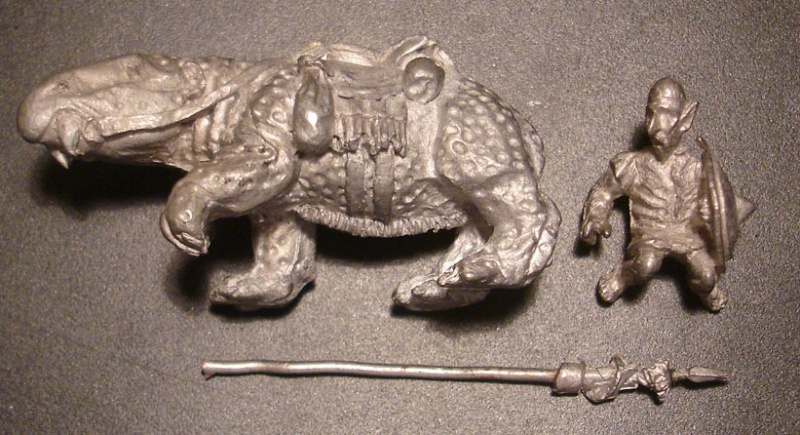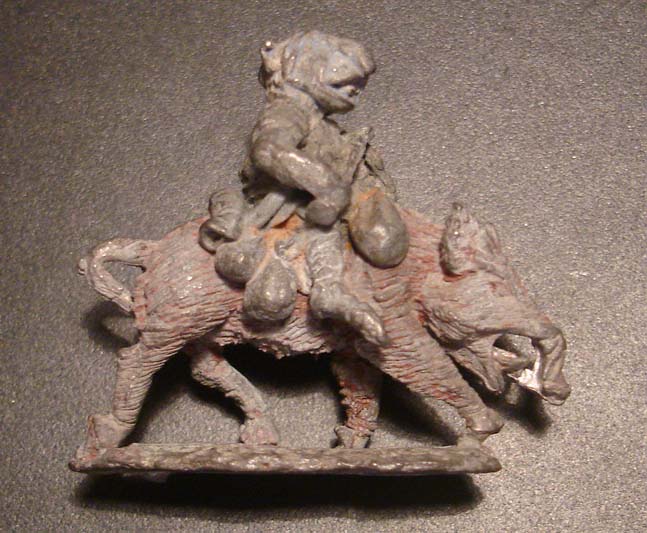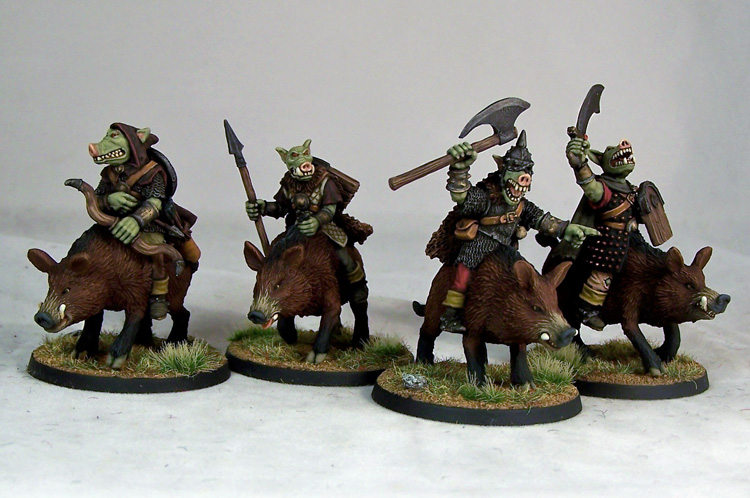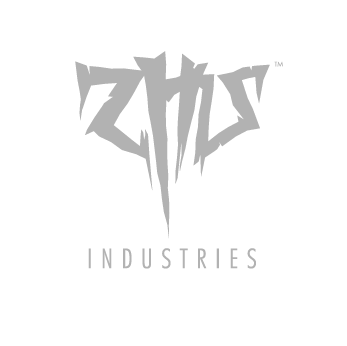Hwæt! let us celebrate Orctober with some musings on the origins of the 'orrible cratures.
It is well known among the wise that Orc comes from the Anglo-Saxon word Orcneas from Beowulf, a single in the entire medieval corpus. which Tolkien took his inspiration from to create his malignant goblin-folk. White-power and folkish right-wing nationalists like to claim that "orc" means foreigner in Anglo-saxon, to try to use the popularity of Tolkien to promote their racist ideology, and support the idea that Anglo-Saxons saw all outsiders as monstrous filthy scum, and that people are inevitably and historically racist. But they are wrong, orc = foreigner has no basis in the historical record or scholarly theory. In fact the word for foreigner in Anglo-saxon is Waelisc - the origin of the word - 'welsh', and you can make of that what you will...
Orcneas is generally accepted by medievalists as being a compound word meaning Hell Corpse, which the recently departed Irish poet Seamus Heaney translated as 'phantoms' in his 2002 edition of Beowulf
To my ear, Heanys phantoms are a little too airy, too ephemeral, they carry something of mist shrouded isles and romantic 19thC celto-nationalism, of fake Druidic orders and spectral ladies in white and fireside ghost stories. It could be that I'm projecting a primitive, earthy, barbaric quality onto the supernatural beliefs of the Anglo-Saxons which is undeserved, but Hell-Corpse to me suggests something more akin to a George A. Romero Zombie than an incorporeal ghostly presence. Indeed Orc is generally agreed to stem from Orcus, a demon of the underworld who, like Hades or the norse Hel's name was also used for their domain. As well as ruling his was responsible for the punishment of oath-breakers. It is clear that Orcus was known to some OE scribes, who make apologies for the peculiar name of the Scandinavian thegn Orc of Abbotsbury for this very reason), and '-neas' literally corpse, the physical body of the deceased.
Aside from it's infernal greek connotations, the word orc itself also appears in Beowulf, and it simply means cup. If we take that more mundane meaning, and apply it to the '-neas' which we know means 'corpse', we may read Orcneas not as Hell-Corpse but as Cup-Corpse, which in the tradition of Anglosaxon kennings might indicate either someone very drunk - literally Dead-Drunk in modern parlance, or as a darkly humorous way of expressing drowned i.e. one who has died by drinking too much - perhaps even those lost at sea not given a proper burial, and so return who plague the living.
 |
| Northlanders 23 / Massimo Carnevale love that painting - these are my Orcneas. |
This is entirely my own speculation. It has no basis in medieval scholarship, and while I think it reasonable, it is altogether unlikely, seeing the number of Oxfordian undergraduate students that have studied Beowulf, as far as I know none has seen fit to propose a similar formulation. Yet the satirist in me warms to the idea of conflating zombified water-filled bloated corpses and the hordes of dead-eyed pale-flesh-exposed binge-drinking youth that rise up to wreak wrack, ruin and violence to every English town and city for two out of every seven days, like Grendels illegitimate offspring wreaking revenge in Hrothgars mead-hall over and over again.
In Beowulf Elves, Giants and Orcneas are listed as 'Children of Cain' and it's hard to conceive of a walking corpse as having a particular genetic ancestry that defines its nature, although the concept of the Mark of Cain - the curse placed on Cain for killing his bother - marks him as one who cannot be killed, but nonetheless wanders the earth. Yet no, Tolkien removed the idea of Orcs being undead, so they (re)entered our popular culture in a new guise, irredeemably evil, ugly warriors.
Riders of the Boar
But no where in Beowulf, or Tolkien does an Orc ride a giant boar, sober, drunk, alive, dead or otherwise. Wolves, wargs, yes, Boars, no. The especial relationship between Orc and porcine mount cannot be found in the good professors work, and doesn't appear in the early canon of Dungeons & Dragons - certainly not OD&D or the 1e Monster Manual (although it does appears in the mid-80s Battlesystem). So where does it come from?
The answer, as it is for the origin of so many things that regularly appear in Warhammer, is Runequest...
 |
| Mongoose Runequest Tusker (2006) |
While the image above is quite recent, it's specific object goes back 30 years, to the mythical dawn of time, to 1976 in fact.
In White Dwarf 12 (1979), the second ever advert for Citadel Miniatures lists Half Orc on Tusker. Runequest Tusk Riders being Half Trolls, riding beasts named Tuskers the title would be very familiar to say the least to followers of the Runequest game.
The drawing by Lisa Free in the Borderlands campaign pack published by Chaosium in April 1982. The image was also reprinted in Dicing With Dragons - Introduction to Roleplaying Games by Ian Livingstone published in the UK 1982.
THE TUSK RIDERS are the remnants of the first human civilization, who were corrupted by breeding with trolls and eventually destroyed by the Dragonewts. Some managed to escape into the mountains, where they lived among their troll friends, consorting in evil and corrupt practices. Their steeds were great battle-pigs. some as big as a buffalo. adapted to crossing forests and hills without trouble.
Greg Stafford - White Bear and Red Moon - 1976
 |
| White Bear Red Moon Tusker Counter | via |
TUSK RIDERS (HALF TROLLS)
The actual origin. of the tusk riders ere unclear. That they have human ancestry is obvious, but the mark of the trolls upon them as well. Their Cult of the Bloody Tusk demands blood drinking and further abominations.
TUSKERS
Gigantic boars, ridden by tusk riders only. These beasts are fierce and ill-tempered, but love their masters beyond all comprehension.
Steve Perrin - Runequest - 1978
Unfortunately early Runequest doesn't provide much visual reference for the Tusk Raiders or their tusk mounts.
In White Dwarf 12 (1979), the second ever advert for Citadel Miniatures lists Half Orc on Tusker. Runequest Tusk Riders being Half Trolls, riding beasts named Tuskers the title would be very familiar to say the least to followers of the Runequest game.
 |
| Half Orc / Red Orc on Giant Tusker (1979) |
Remembering in those days, ordering miniatures without having seen photographs of them was normal. The miniature itself doesn't appear at all boar-like, more like a
strange Dewback from Starwars, or a crossbreed of a Dark Crystal Mystic, a Zoat and Albrecht Durers Rhinocerous, but
nontheless the name Tusker, and the half-breed monster who rides him would have been
familiar concepts to Runequest fans. And Then 4 months later (White Dwarf 14) the same miniature is listed as Red Orc on Tusker. This transformation or innovation of Red Orcs was to last into 1st Edition Warhammer but no further.
Gnolls are hyena headed beastmen in AD&Ds 1977 monster manual, but seem to have transformed into bulbous-headded goblin creatures by the Perry Bros. over at Citadel when the Fantasy Tribe Gnolls were first released in 1980. One is reminded of the early Ral Partha / Citadel Bugbears that resemble gangly, big-eared Gollum like creatures rather than the giant hairy goblin creatures of D&D. A strange trend of naming something the same as a creature in a game-system but making the model look nothing like its description.
Andrew May points to Don Greers 1981 magnum-opus Down in the Dungeon (via Monsterbrains), which contains this curious image.
These orcs seem influenced somewhat by the Hildebrandt Bros, although the addition of a presumably female orc in plate armour is an interesting addition. Nontheless, Down in the Dungeon seems to take most of its inspiration from D&D, so perhaps there is an earlier D&D reference to boar riding orcs being drawn from here.
Gnolls are hyena headed beastmen in AD&Ds 1977 monster manual, but seem to have transformed into bulbous-headded goblin creatures by the Perry Bros. over at Citadel when the Fantasy Tribe Gnolls were first released in 1980. One is reminded of the early Ral Partha / Citadel Bugbears that resemble gangly, big-eared Gollum like creatures rather than the giant hairy goblin creatures of D&D. A strange trend of naming something the same as a creature in a game-system but making the model look nothing like its description.
 |
| Fantasy Tribes Gnoll on Giant Boar (1980) |
Andrew May points to Don Greers 1981 magnum-opus Down in the Dungeon (via Monsterbrains), which contains this curious image.
These orcs seem influenced somewhat by the Hildebrandt Bros, although the addition of a presumably female orc in plate armour is an interesting addition. Nontheless, Down in the Dungeon seems to take most of its inspiration from D&D, so perhaps there is an earlier D&D reference to boar riding orcs being drawn from here.
 |
| Lisa Free, Runequest Borderlands (1982) |
In 1980 Games Workshop was granted the rights to publish a UK edition of Runequest II, and it wasn't before long that Citadel secured the license to produce official Runequest miniatures, and produced an actual, official Tusker in the Runequest Boxed Set 3: Trolls, which appears listed in the Citadel 1982 yellow catalogue. The close proximity of dates between the publication of Borderlands. Dicing With Dragons and the Citadel Runequest Boxed Sets does make me wonder if the copies of Borderlands art had been shipped over to the UK prior to publication as concept art for Citadel to use, and wound up being selected by Ian, or some other order of events.
 |
| Preslotta Citadel Tusker by Little Odo (1982) |
And guess what? Games Workshop are still making Runequest Tuskers today, although slightly less naturalistically proportioned...
 |
| Orc Boyz or Green orcs on Tuskers or Tusk Riders |
Although if you like to mix up your traditional Runequest imagery with your traditional AD&D stylings, there's always these porcine fellas from Otherworld, aka Bloodstone Pass vs. Dragon Pass.
 |
| Otherworld Orcs on Warboars |
Finally a big shout-out, or should that be a massive Waaaaaaagh? to Erny for instigating this Orctober





